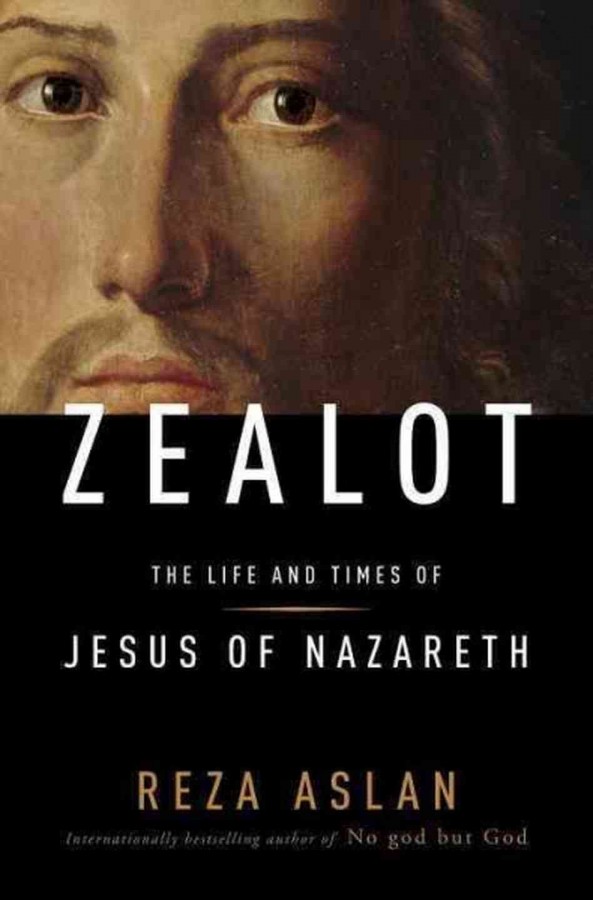“Zealot” paints a picture of historical Jesus
Who was Jesus Christ? If you asked a group of people this question, you would most likely get a different answer from each person. Jesus was a prophet. Jesus was God incarnate. Jesus was a Jewish peasant. Jesus was a political rebel. Jesus was a savior. Jesus was a simply a man.
Basically, many of us have our own personal Jesus. But how did these radically different versions of one figure come to be?
The result of decades of in-depth research and translation of the Bible and other holy scriptures, “Zealot: The Life and Times of Jesus of Nazareth” is Reza Aslan’s attempt to unmask who the real Jesus was through historical facts and evidence.
Since its release in 2013, the book and its author have been met with an unreasonable amount of controversy. This controversy is in part because of the subject matter in general, but also because of the author’s personal life.
Iranian-American writer and historian Reza Aslan has been criticized and questioned for writing a book detailing Jesus’s life because he is Muslim. Some people have failed to acknowledge the fact that he is a religious scholar, so it is his job to write about religions, regardless of whether he practices them himself or not.
Aslan insists that to understand the Jesus of history, you must first be aware and understand the economic, political, religious and societal issues occurring before and during Jesus’s time.
There was an overwhelming amount of turmoil and social oppression throughout first-century Palestine, with power being passed from one monopolizing leader to the next, leading to political and religious revolts by the Jewish civilians against the Roman rule.
And this is where the true strength of the book lies: Aslan’s ability to vividly describe the complicated social structures and politics within this region.
His fast-paced narrative describing what citizens endured within Jerusalem is a way to better understand what kind of life Jesus would have led and what he would have experienced as a citizen under Roman rule. Aslan explores the long discussed theory that Jesus was a Jewish zealot, rebelling against the Roman authority and become a religious leader for the Jewish people.
This may be a biography, but that does not mean it is simply a dry history text book only full of random dates and abstract historical figures. There are intriguing characters with intense conflicts and battles between them and enough drama and ludicrous acts of violence perpetrated by both sides to please any fan of bloody action films.
While this book was meant to center around Jesus’s life and ministry, much of it seemed to focus more on the history leading up to Jesus’s time.
Unfortunately, despite Aslan’s ability to skillfully describe this history in great detail, he fails to accomplish this in a chronologically cohesive manner. His narrative sometimes wanders confusingly, hopping from century to century without much accompanying context, making it sometimes difficult to distinguish between different time periods and the overall chronological flow of events.
Throughout the biography, Aslan attempts to tear down the massive amount of misconceptions surrounding Jesus that have pervaded history as “facts” for centuries. These include the belief that Jesus was born in Bethlehem while he was actually most likely born within the small village of Nazareth and the Catholic Church’s denial that Jesus had siblings in an attempt to preserve the Virgin Mary’s sexual celibacy, while he in fact had at least four brothers.
Aslan does an admirable job of exploring obscure historical writings and facts about Jesus and his teachings while also reexamining well known historical debates from different angles.
Overall, while reexamining Jesus from different angles is interesting, the book’s true intrigue comes from examining other famous figures during Jesus’s time. There are chapters exploring figures such as John the Baptist and his influence on young Jesus, or Jesus’s brother, James the Just, who should have been left to manage Jesus’s ministry after he was crucified, only to be replaced with Apostle Paul and almost entirely excluded from the Holy Scriptures after his death.
At many points throughout the book Aslan comes off harshly incredulous about certain passages in the gospel, while simultaneously accepting other passages as fact if they happen to bolster his thesis. Aslan fails at times to present inconclusive evidence objectively for the readers to draw their own conclusions, and this is where the book falls short of its potential.
“Zealot: The Life and Times of Jesus of Nazareth” proved to be an engrossing, yet somewhat jumbled, fast paced biography that will significantly broaden your understanding of the tumultuous times that Palestine endured throughout the first century.
And while it does not exactly live up to its potential as a groundbreaking piece of historical literature about Jesus, “Zealot: The Life and Times of Jesus of Nazareth” offers a condensed history of Jesus’s life, ministry and death and the controversy surrounding the debate about who he was juxtaposed with how he is perceived today.
The main point that Aslan makes clear in his narrative is that the zealous revolutionary speaker known as Jesus of Nazareth and the transcendent religious leader known as Jesus Christ are two vastly different people.









